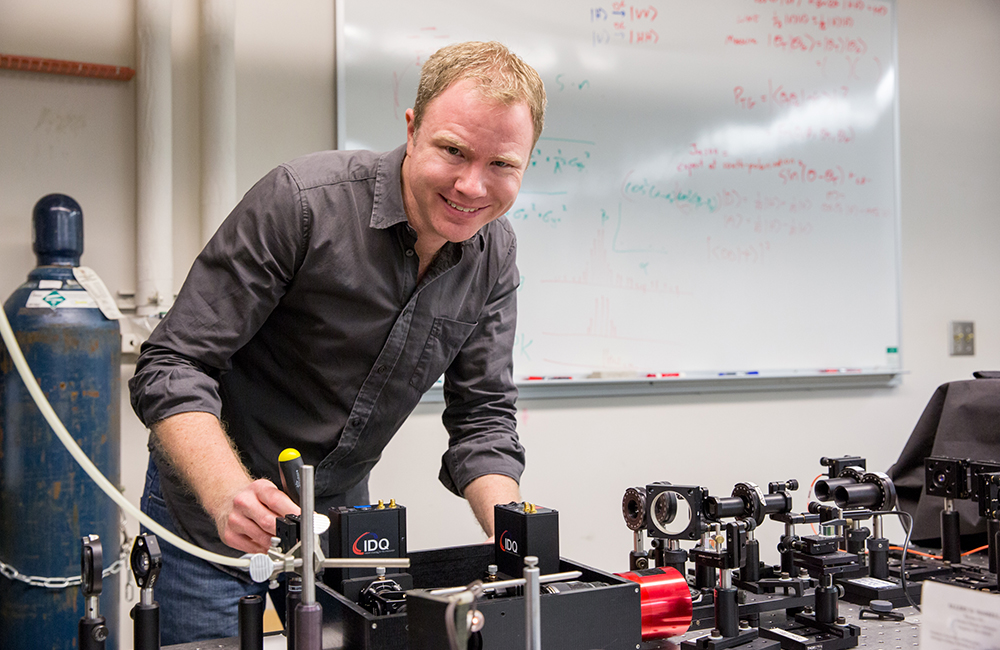Office of Naval Research Clinic Project Combines Physics and Engineering
August 31, 2021
Physics professor Jason Gallicchio is the director of a new Clinic project sponsored by the Office of Naval Research. The project, “Survey, geolocation, and precision transmission with airborne software defined radio,” is part engineering, part astrophysics and part experimental physics, and the end goal is a better understanding of dark matter and the formation of the earliest stars and galaxies.
“The project has two parts,” Gallicchio says. “One is related to calibrating the antenna pattern of a radio telescope antenna by flying around a very accurate transmitter on a quadcopter or hexacopter. The other is to put a radio receiver on a remote-controlled airplane and map out the location of the Navy’s own radio transmitters. This receiver will have four antennas that will measure the arrival times of signals and can determine their direction of arrival. All transmitters and receivers use a recently popular technique called ‘software defined radio’ where software directly feeds samples into a transmitter and directly interprets samples from a receiver.”
The engineering-heavy project is a bit of a divergence from Gallicchio’s previous research (which include studies of quantum entanglement and a stint at the South Pole Telescope) in Antarctica), but it draws on similar expertise. “The radio telescope calibration half of the project is relevant for astrophysics,” he says. “It’s engineering that must be done to know exactly which directions in space the radio telescope is sensitive to. Experimental physics and astrophysics require a lot of engineering and then a lot of big data analysis. Once the beam patterns of these radio telescopes are understood, they can be used to map out where all of the neutral hydrogen is in the very early universe.”
